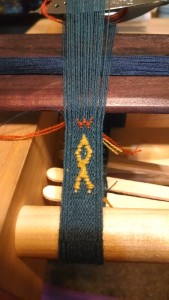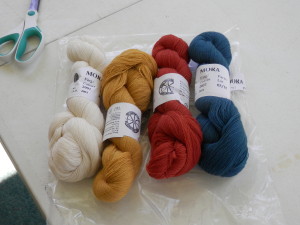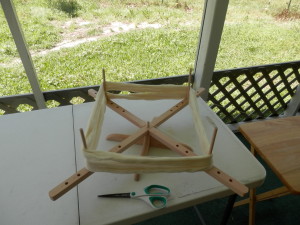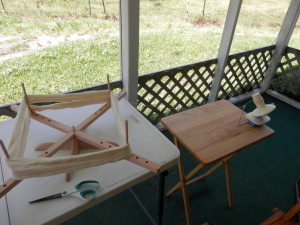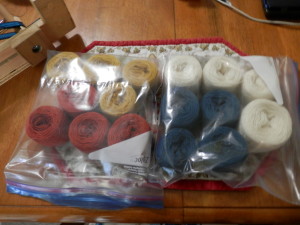Sunday was the moment the weaving came off the loom. Total woven length is 1.36m. And the wool used in the brocading is the same weight as the wool used in the weaving, except that the brocade uses doubled threads. For the weft I used 60/2 silk, and in a next product I might go thinner still.
As you can see from this first picture, I handled the colour changes by cutting the brocading thread at the end of each colour. Each woolen brocade thread passed through one weft after it’s done brocading; given the stickiness of this wool, that should be more than enough to anchor it in place. In some cases, like the small triangles, you use two colours at the same time; even beating extra hard I struggled to get both brocading wefts to lie in the weft without a smidge of gappage. In a next attempt, I think it might be better for those areas if the brocading weft does not go the width of the band, but instead goes only part way.
On the other hand, once the band relaxed off the loom, the occasional gaps between successive lines of brocading improved already.
 Trimming the ends of the brocading threads carefully, you can see that the brocading threads are visible on the back only where it moves from pick to pick; I dropped the brocading threads two cards from the edge (or halfways through the 4 card selvage), so that there wouldn’t be any colourful bumps on the very end.
Trimming the ends of the brocading threads carefully, you can see that the brocading threads are visible on the back only where it moves from pick to pick; I dropped the brocading threads two cards from the edge (or halfways through the 4 card selvage), so that there wouldn’t be any colourful bumps on the very end.
Next step is to take it to the post office tomorrow and mail it off, and then I want to experiment with some pattern variations.


